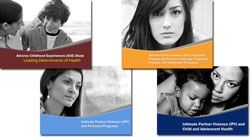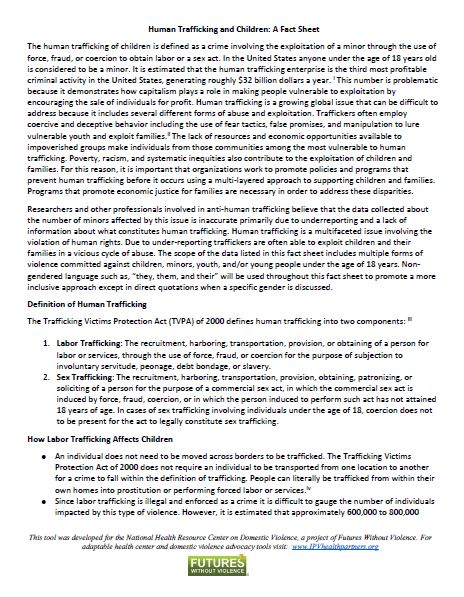Title: Building A Health Care Response to Human Trafficking
Date Recorded: November 19, 2013
Description: As the health care system increasingly recognizes the impact of domestic and sexual violence on women’s health, there have been many efforts to improve the public health response to violence against women. Until recently, human trafficking has been largely seen as a legal issue. However, human trafficking is also a health care issue: victims of trafficking suffer a host of health-related problems and are at high risk of injury, illness and even death from the circumstances of their forced treatment and bondage. As one of the few people who come into direct contact with trafficking victims, healthcare providers have the unique opportunity to assess for trafficking, as well as offer links to much-needed community resources. As part of a comprehensive approach to all victimization, health care providers need education about the prevalence and dynamics of trafficking and how to effectively assess and intervene on behalf of trafficked victims.
Learning Objectives:
- List three similarities between IPV and human trafficking
- Identify and respond to human trafficking victims in health settings
- Initiate multi-disciplinary collaborative strategies in responding to human trafficking
- Access local, state and national anti-trafficking resources
This webinar is co-sponsored by Futures Without Violence’s National Health Resource Center on Domestic Violence and the Family Violence Prevention & Services Program, Family & Youth Services Bureau, Administration for Children and Families, U.S. DHHS.
Speakers:
Erica Monasterio, MN, FNP-BC is a Clinical Professor on faculty in the Division of Adolescent and Young Adult Medicine, Department of Pediatrics and the Department of Family Health Care in the School of Nursing at the University of California, San Francisco since 1997. She is the Nurse Faculty in the Leadership Education in Adolescent Health (LEAH) Program and the coordinator of the Nursing Leadership in Adolescent and Young Adult Health (NLAYAH) Program. Ms. Monasterio has over 27 years of clinical experience working with youth and families in primary care, both at UCSF and in the San Francisco Department of Public Health, and is the co-founder of the Cole Street Youth Clinic, part of the San Francisco Department of Public Health’s Community Health Network.
Debra Seltzer, MPA is the Program Administrator for the Sexual Assault and Domestic Violence Prevention Program, Bureau of Health Promotion and Risk Reduction, Ohio Department of Health. Debra began working as a volunteer for the Columbus Rape Crisis Center in 1984, and served as Rape Crisis Coordinator and Prevention Coordinator for Women Against Rape. In 1989, Debra began work as the Director of the Ohio Coalition On Sexual Assault (OCOSA). She left OCOSA in the spring of 1997 to accept a position as a Rape Prevention Coordinator with the Ohio Department of Health. She has a Master’s Degree in Public Administration from the Ohio State University.
Beth Malchus is the Rape Prevention Coordinator for the Sexual Assault and Domestic Violence Prevention Program, Bureau of Health Promotion and Risk Reduction, Ohio Department of Health. She assisted in the development of the ODH Human Trafficking Protocol Template and Training that have been implemented with Ohio’s Health Surveyors and School Nurses.
Resources:
National Human Trafficking Resource Center
(888) 373-7888
nhtrc@polarisproject.org
Girls Educational & Mentoring Services (GEMS)
(212) 926-8089
Standing Against Global Exploitation (SAGE)
(415) 905-5050
info@sagesf.org






 Human trafficking is a growing global issue that can be difficult to address because it includes several different forms of abuse and exploitation. Due to under-reporting traffickers are often able to exploit children and their families in a vicious cycle of abuse. The scope of the data listed in this fact sheet includes multiple forms of violence committed against children, minors, youth, and/or young people under the age of 18 years.
Human trafficking is a growing global issue that can be difficult to address because it includes several different forms of abuse and exploitation. Due to under-reporting traffickers are often able to exploit children and their families in a vicious cycle of abuse. The scope of the data listed in this fact sheet includes multiple forms of violence committed against children, minors, youth, and/or young people under the age of 18 years.




































 Presentation slides detailing a study conducted with 17,421 participants on childhood exposure and health. Slides cover research methodology and results.
Presentation slides detailing a study conducted with 17,421 participants on childhood exposure and health. Slides cover research methodology and results.
